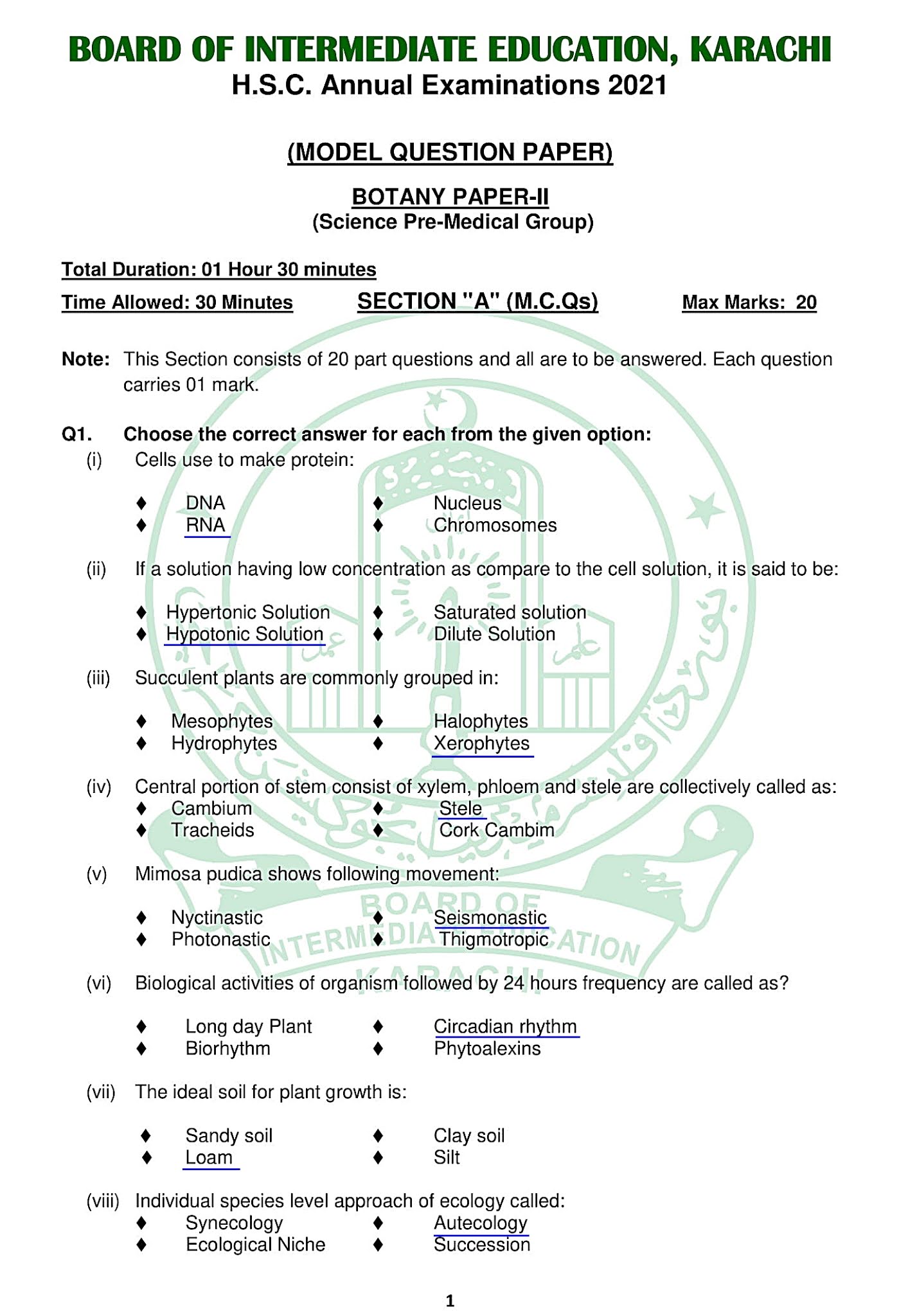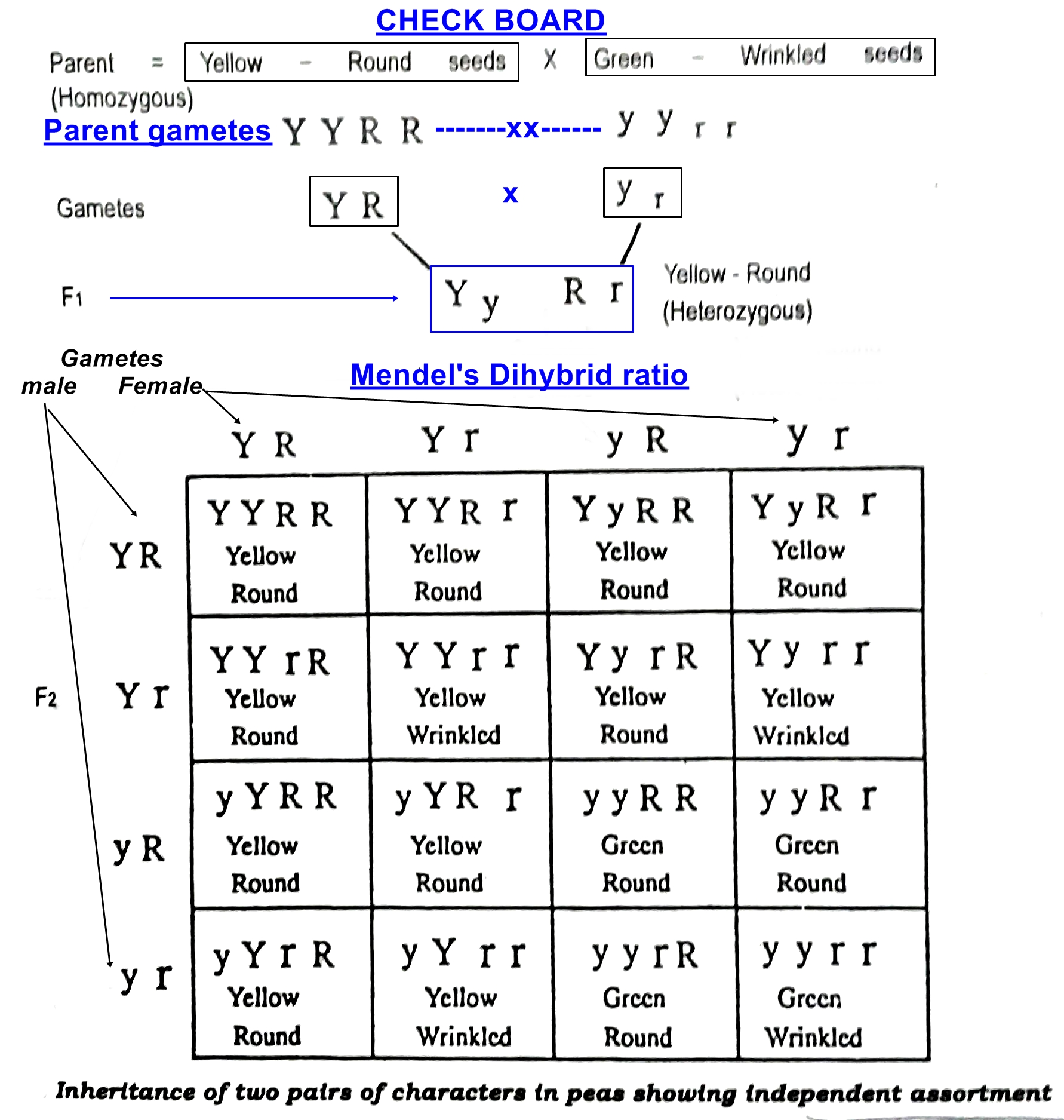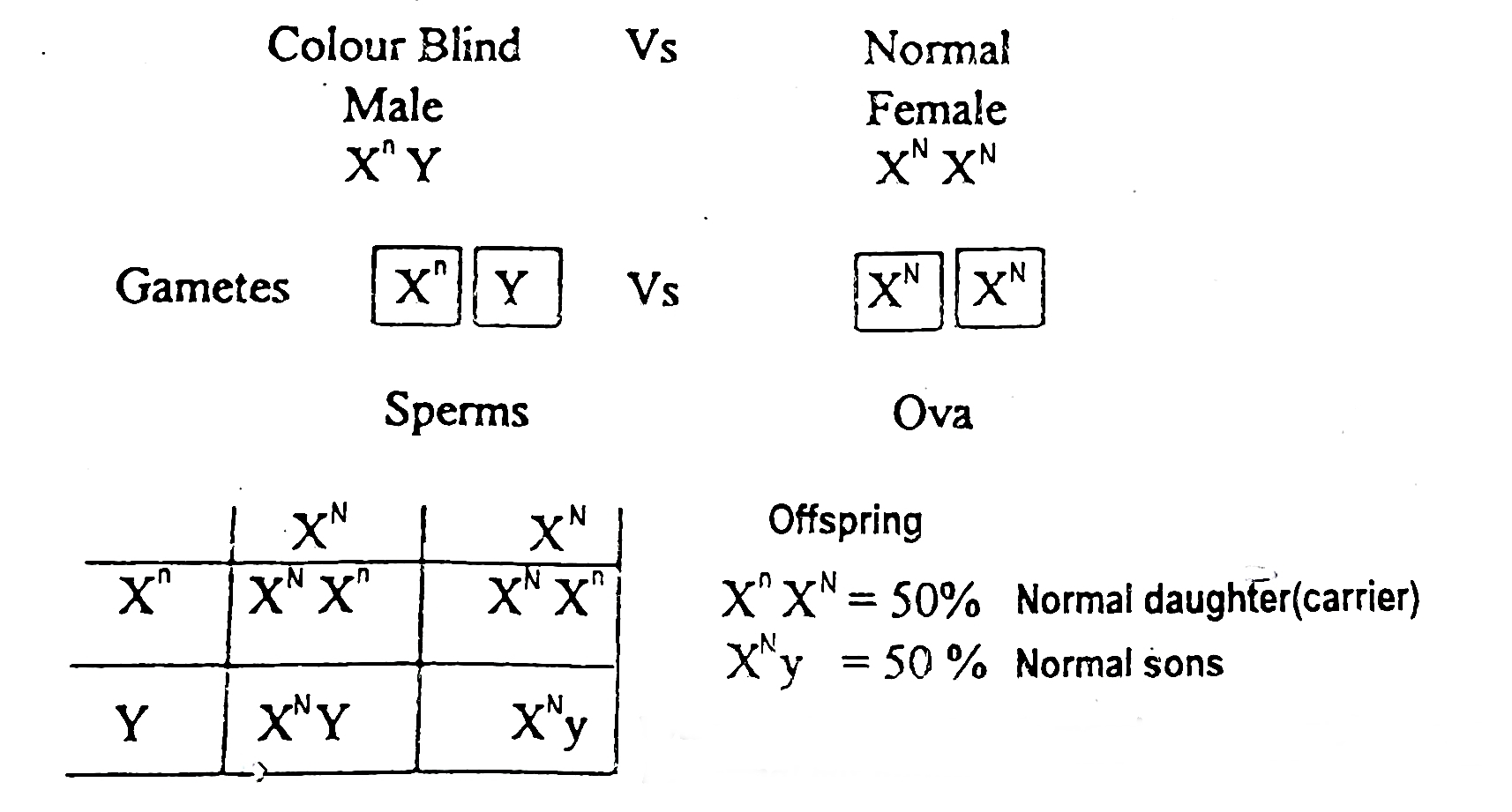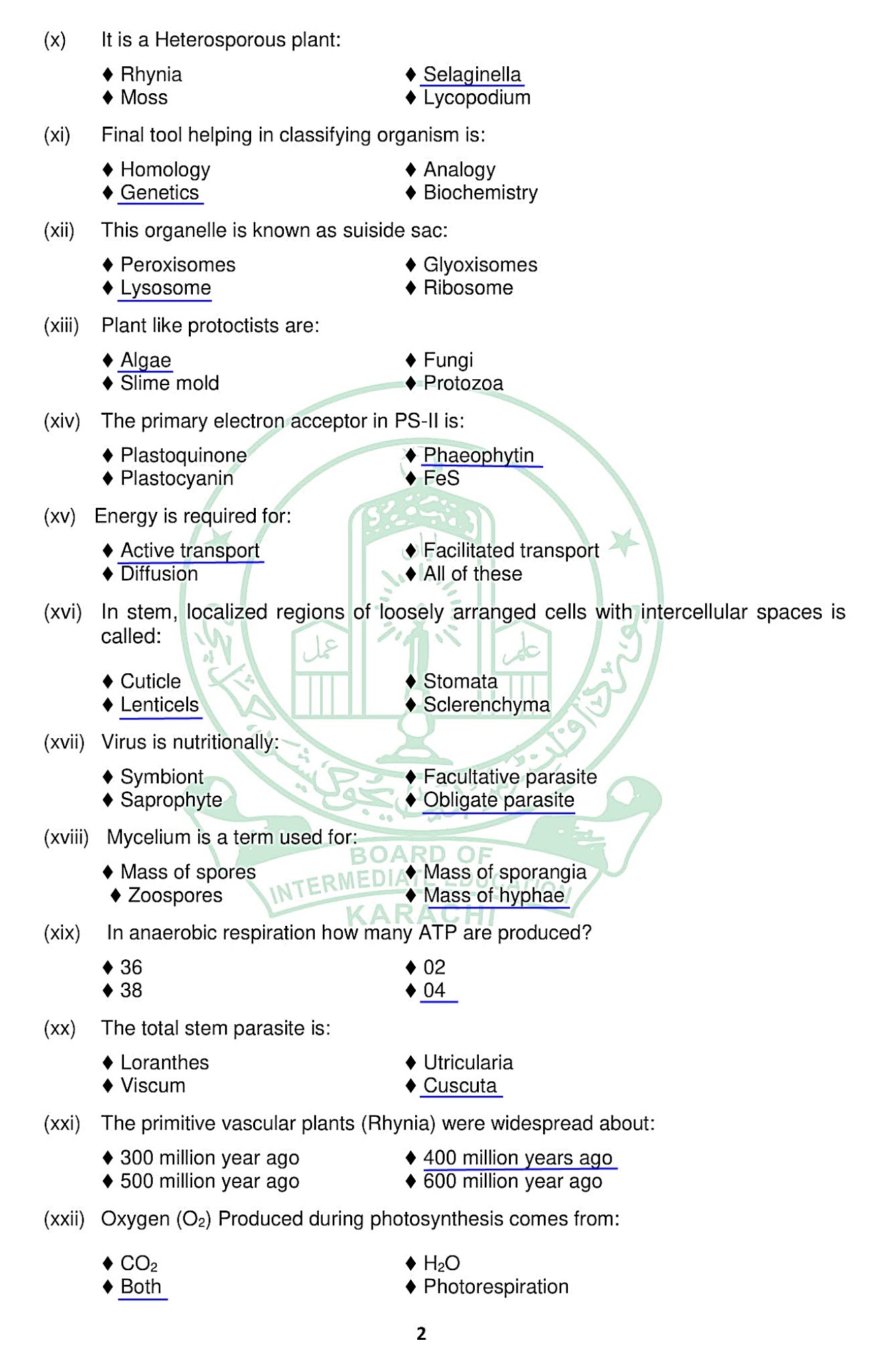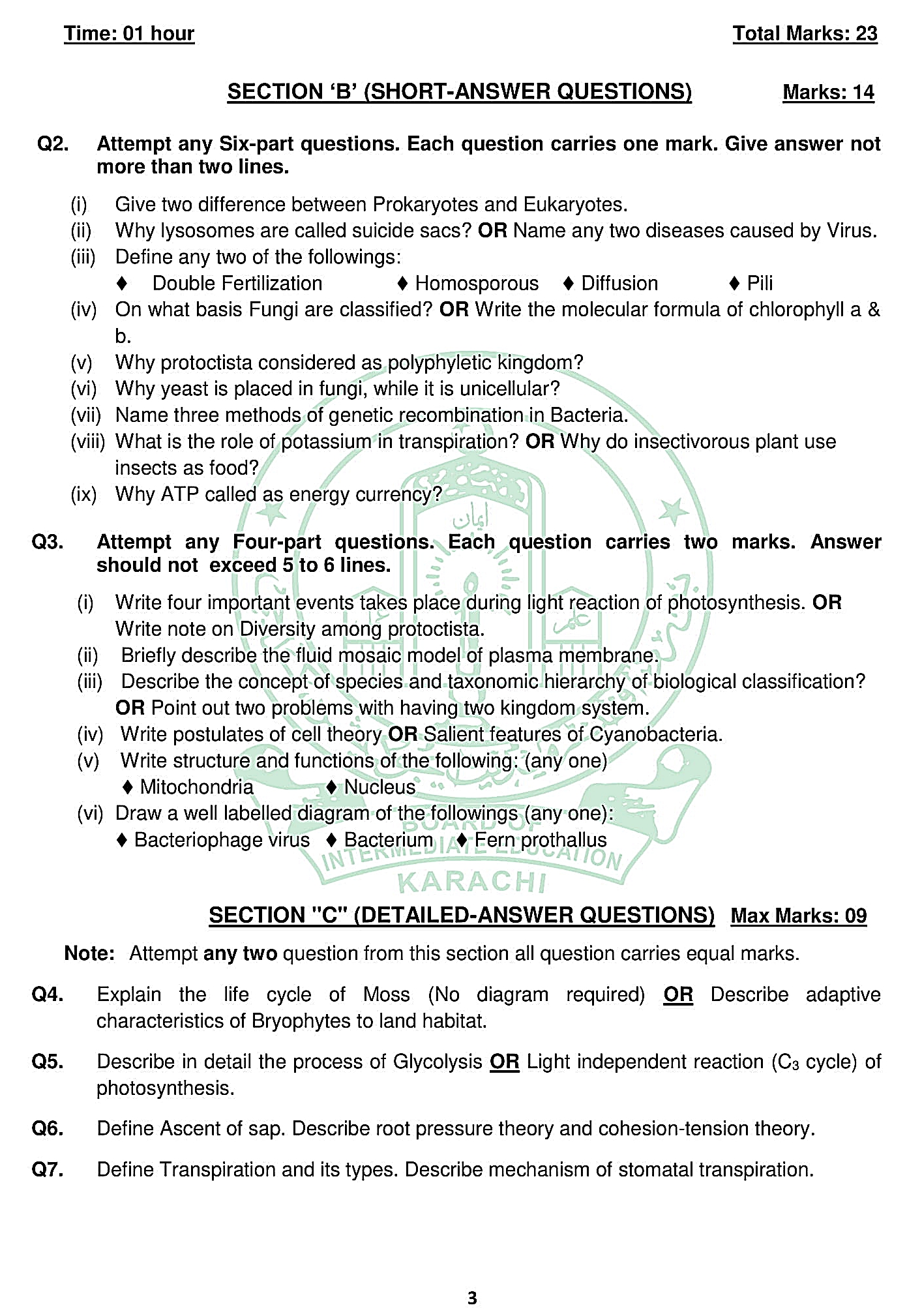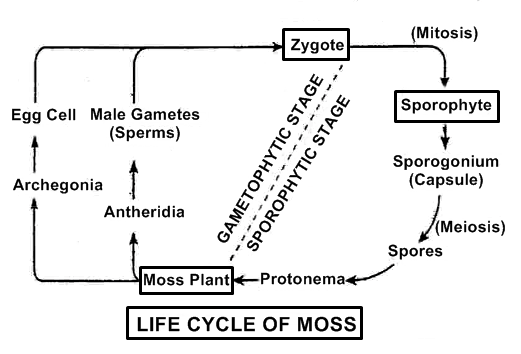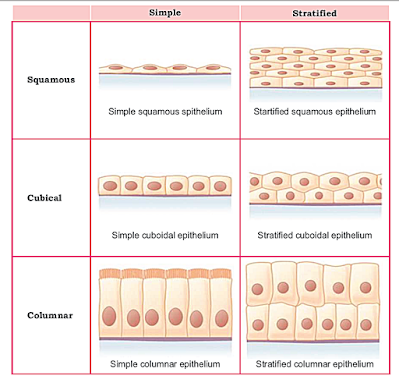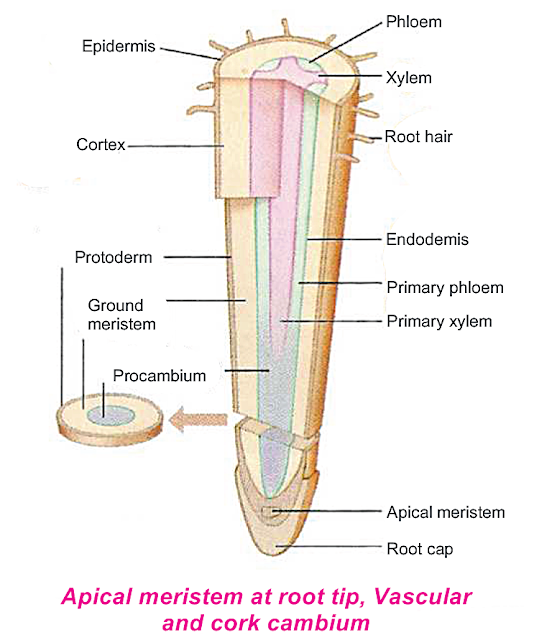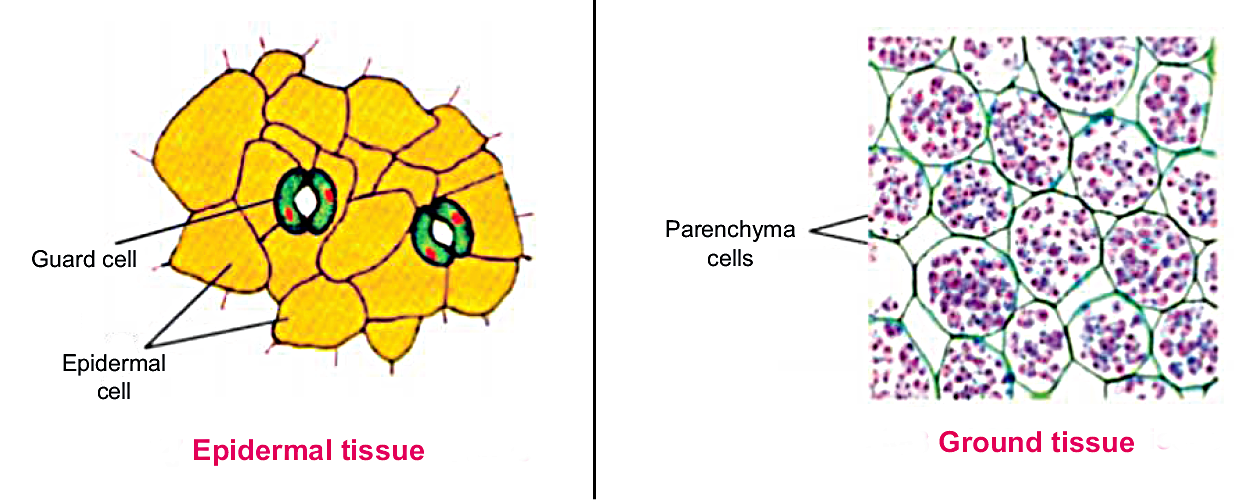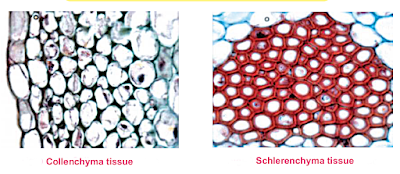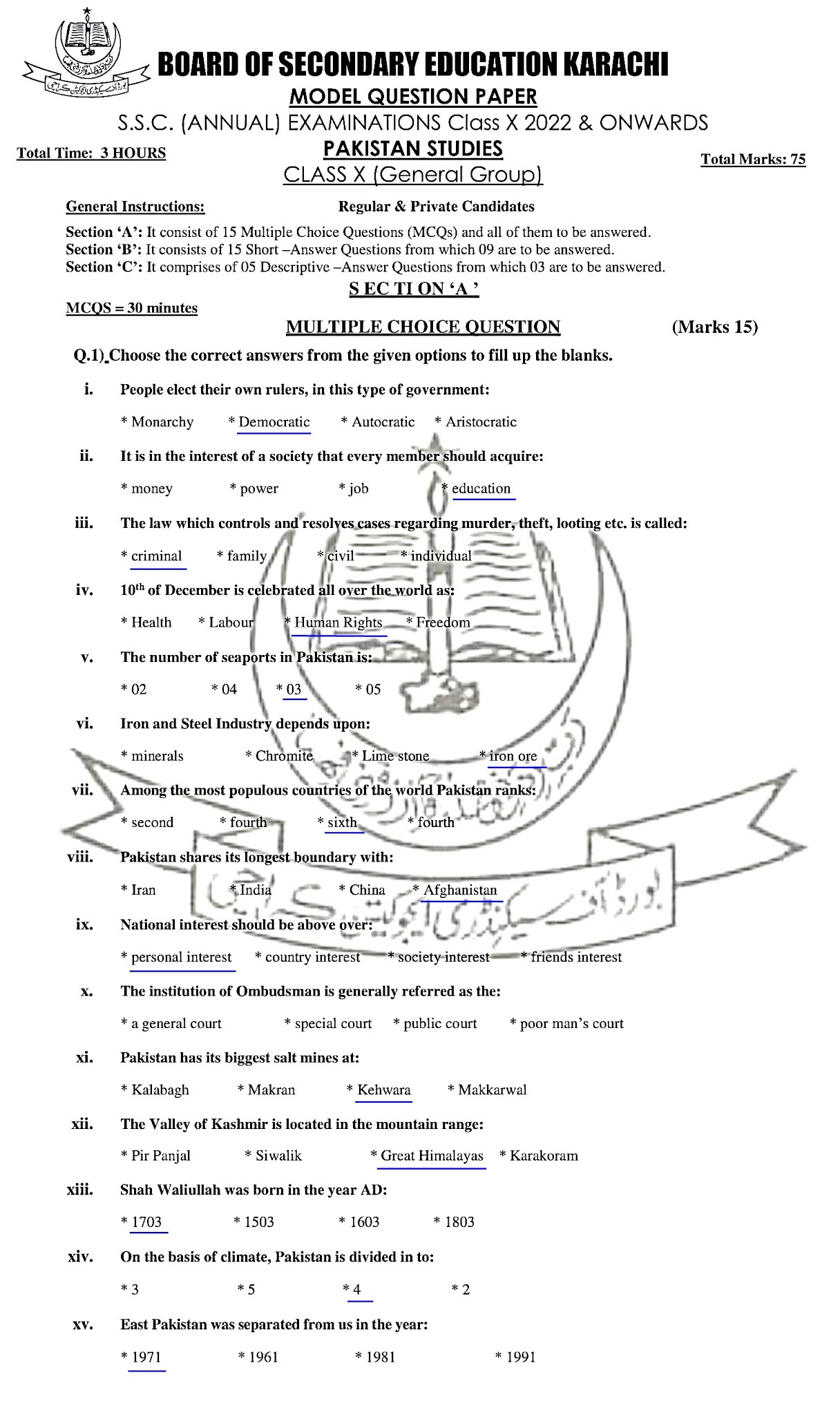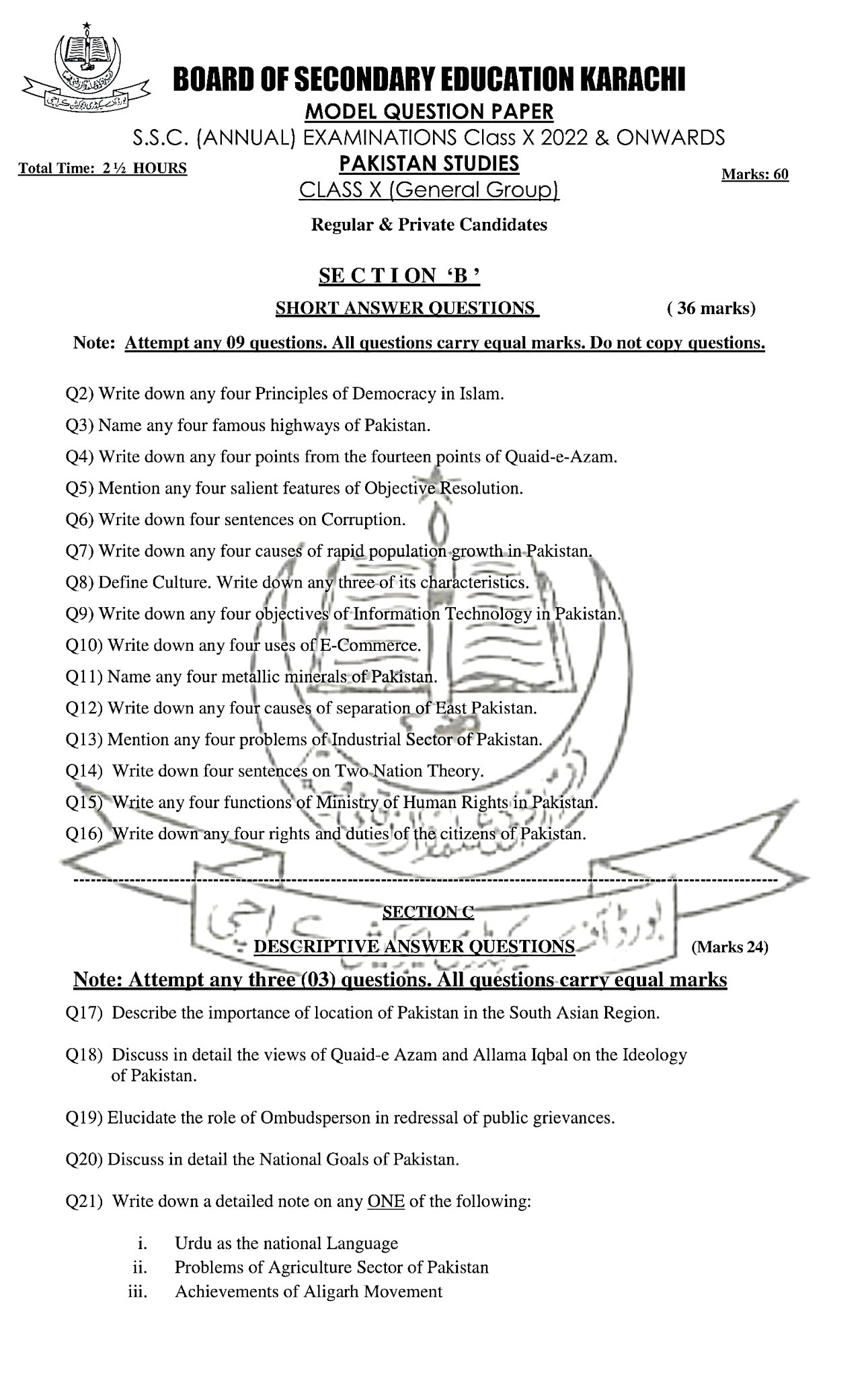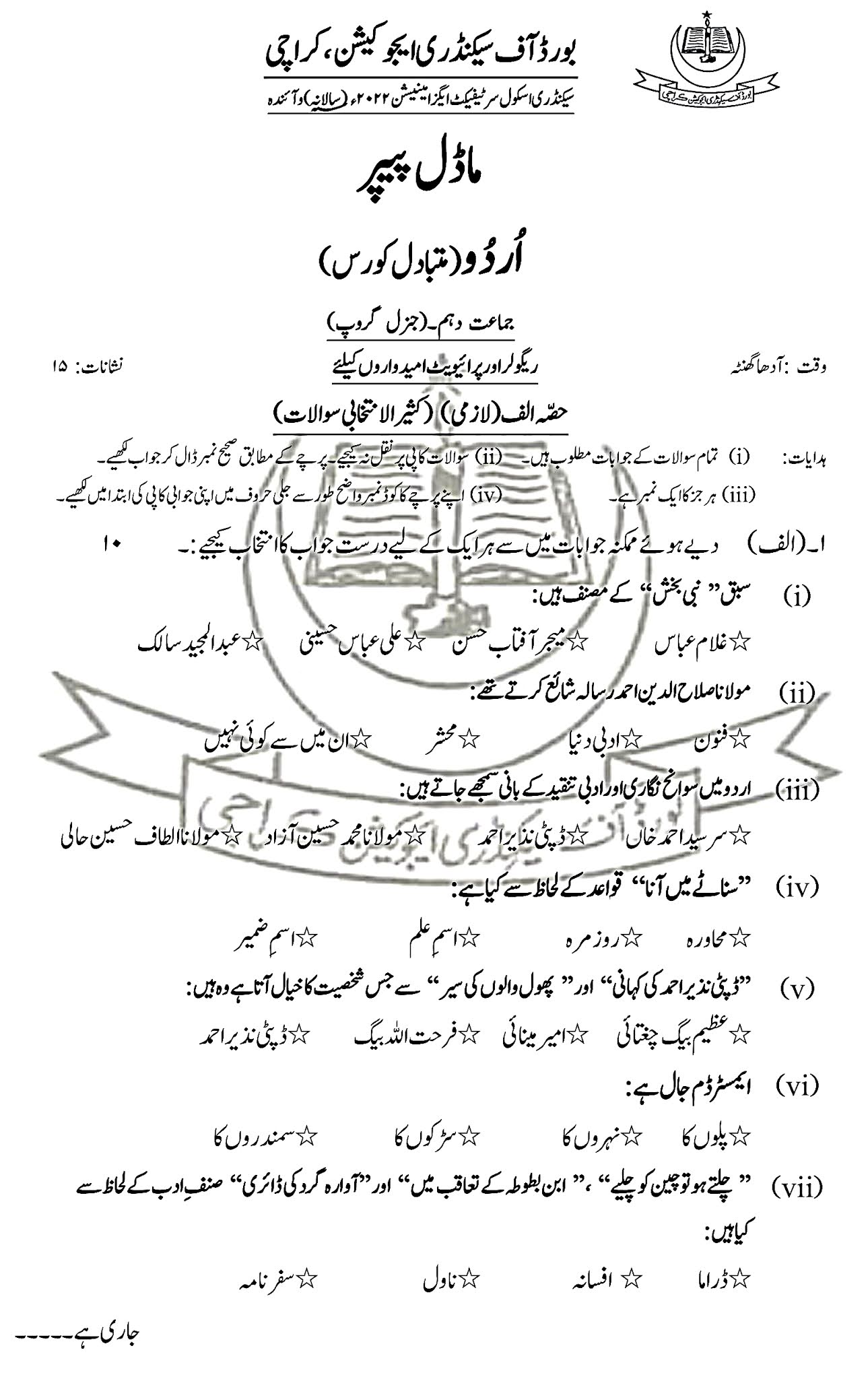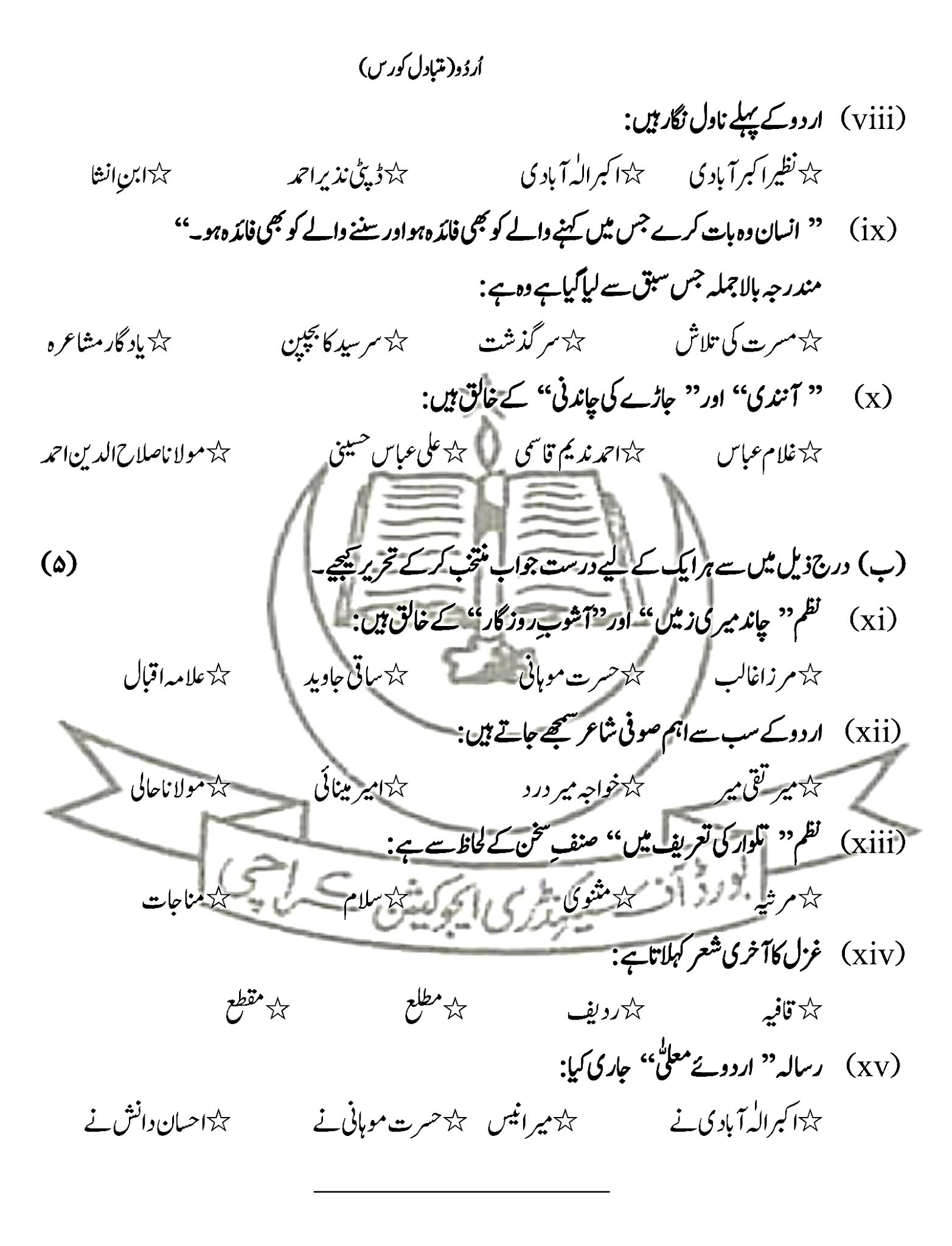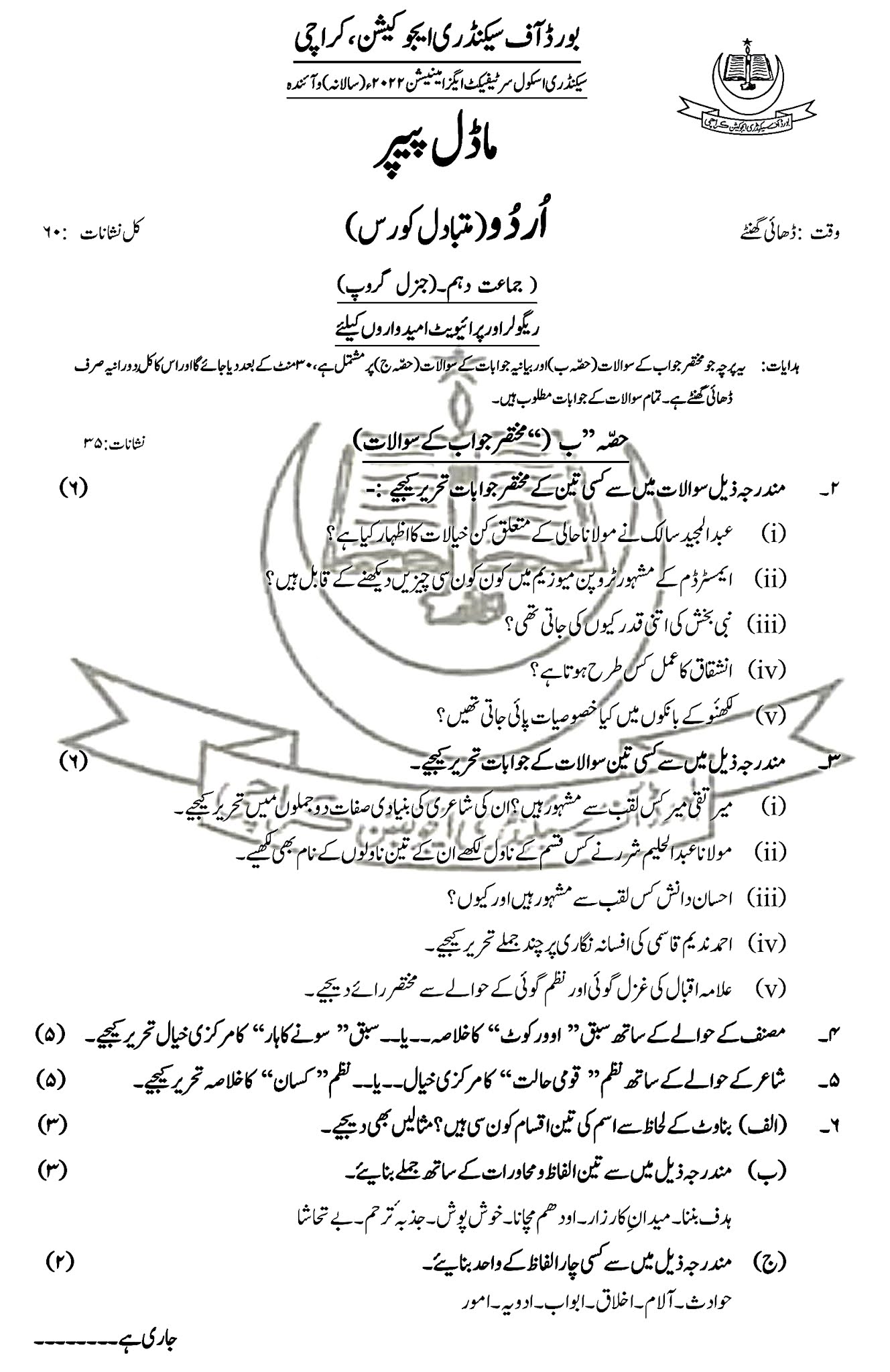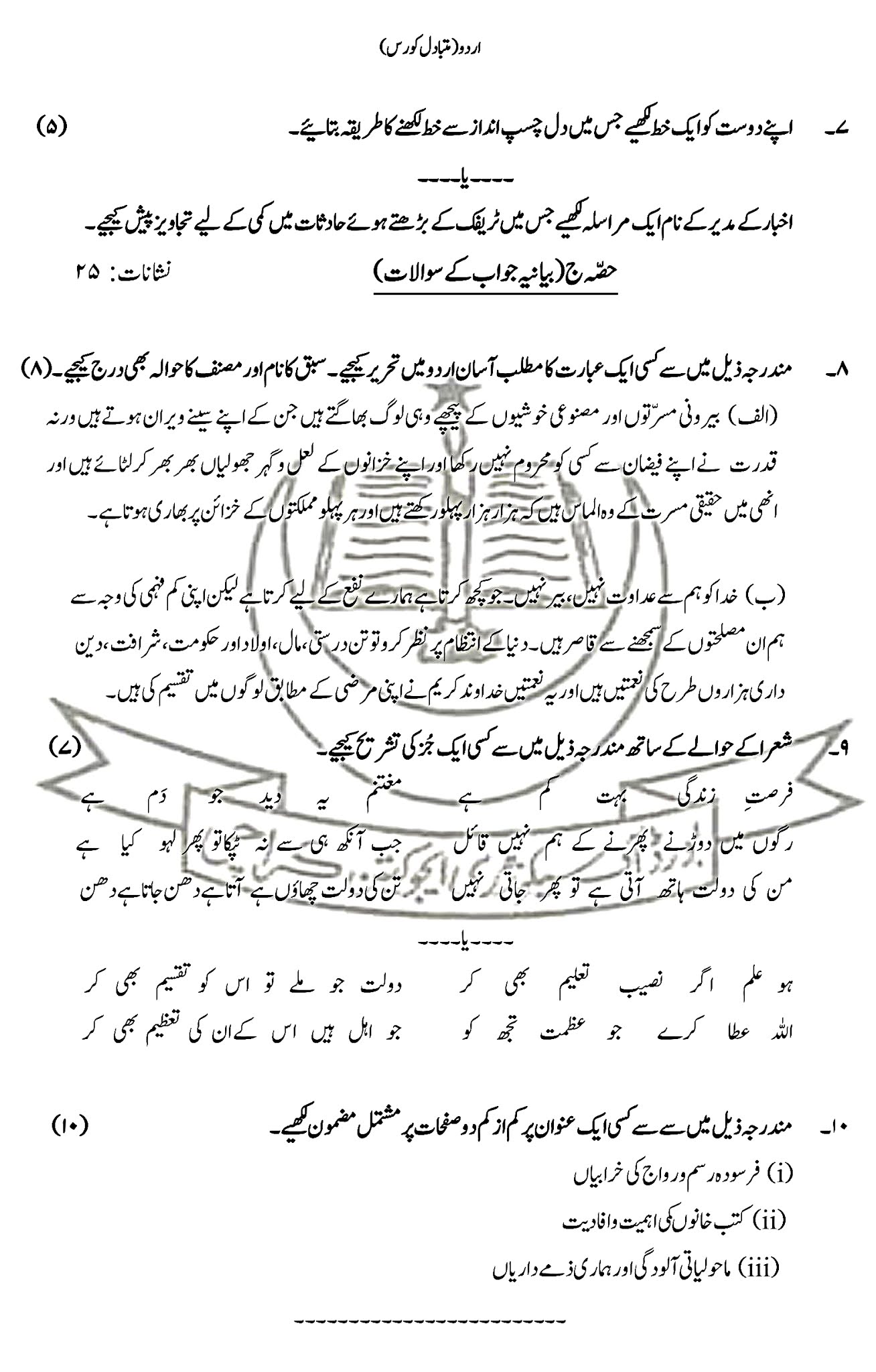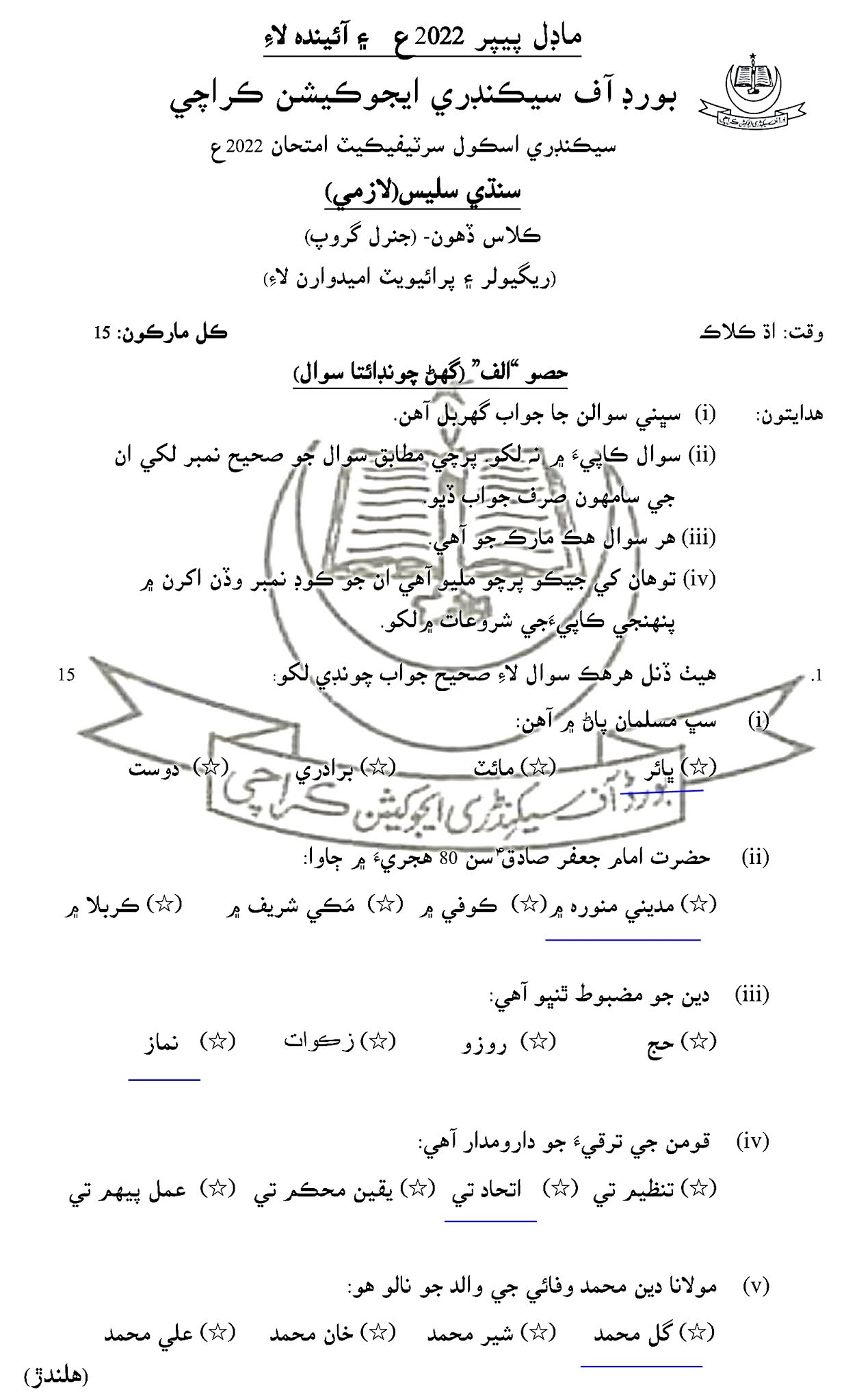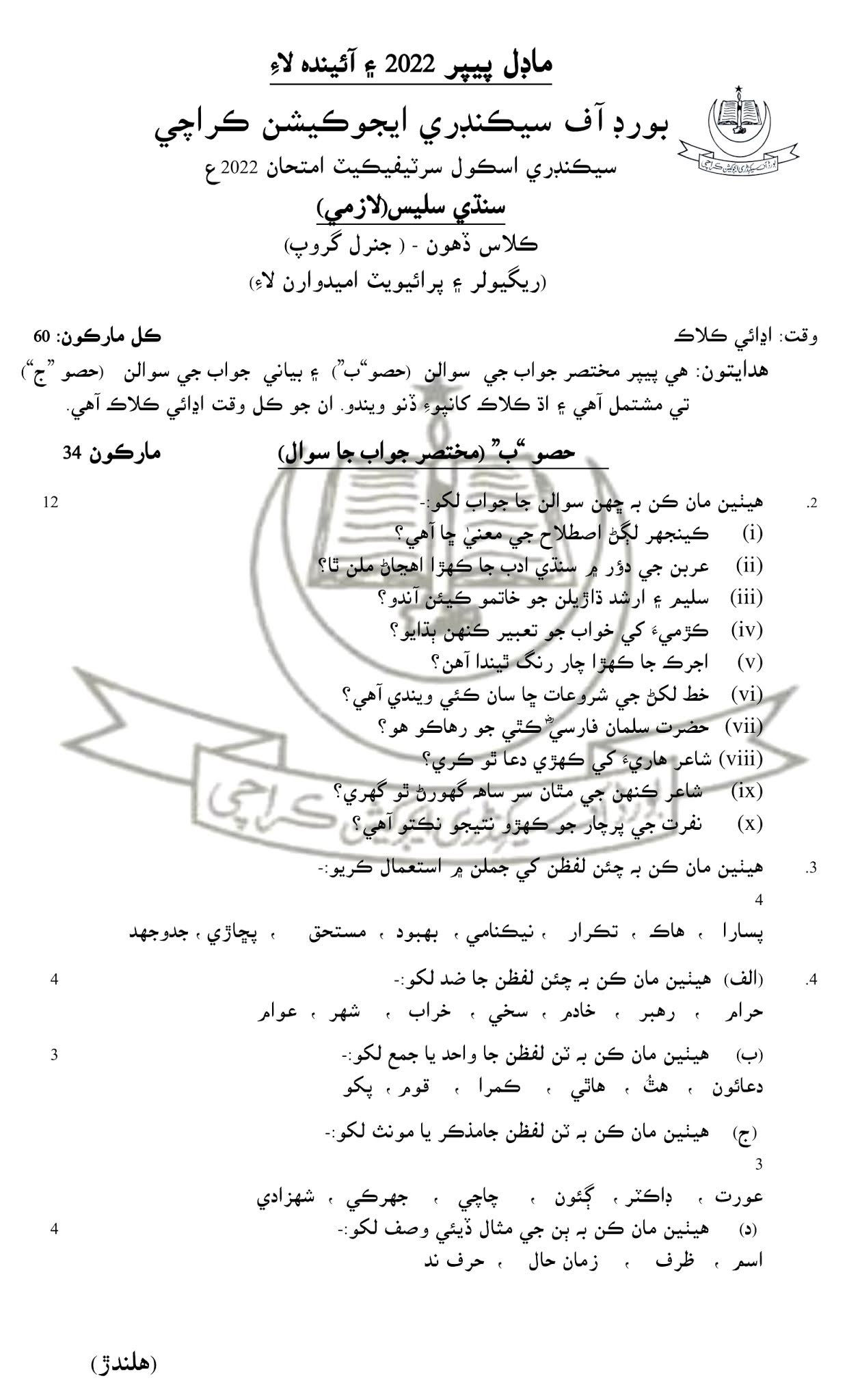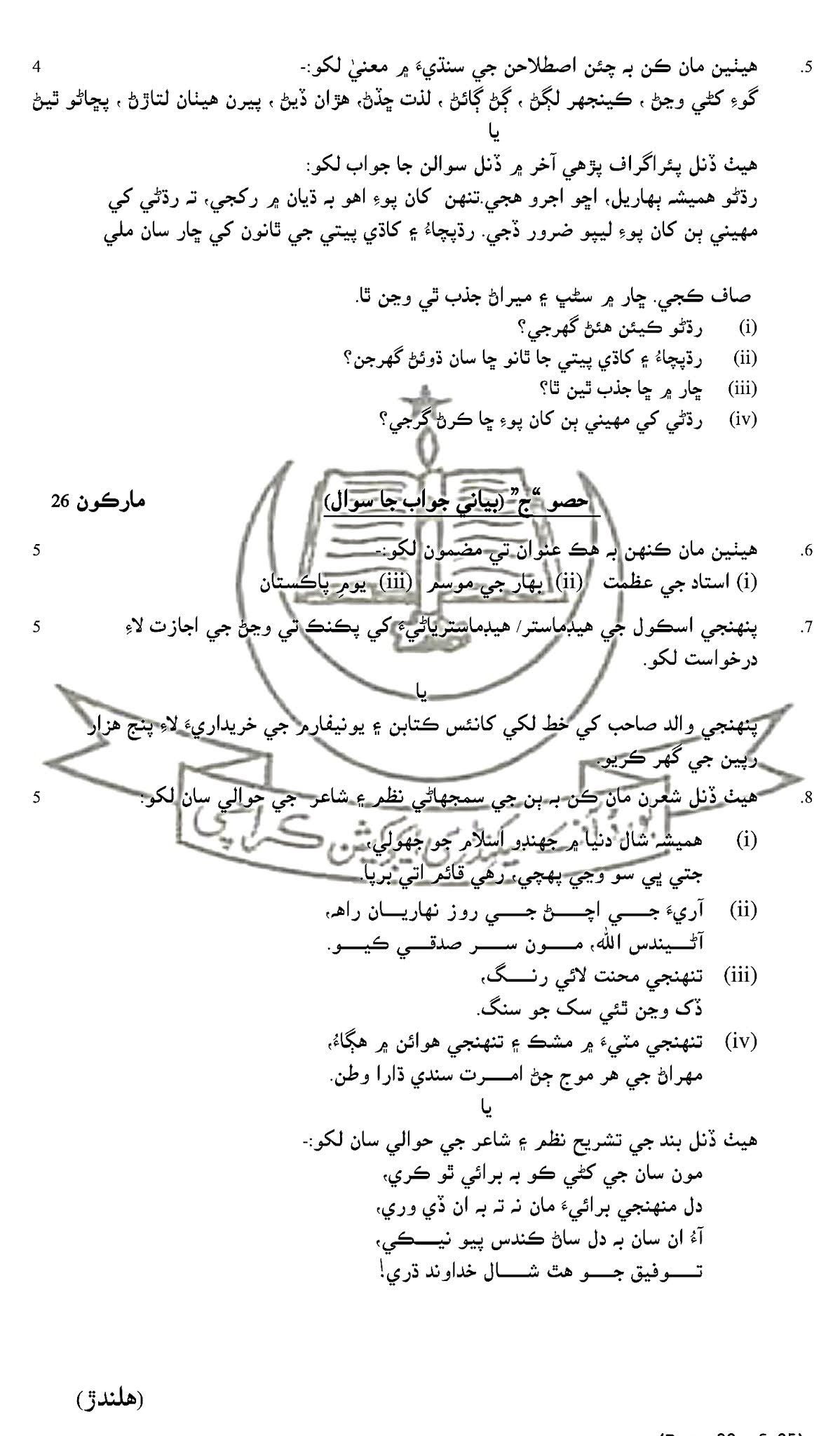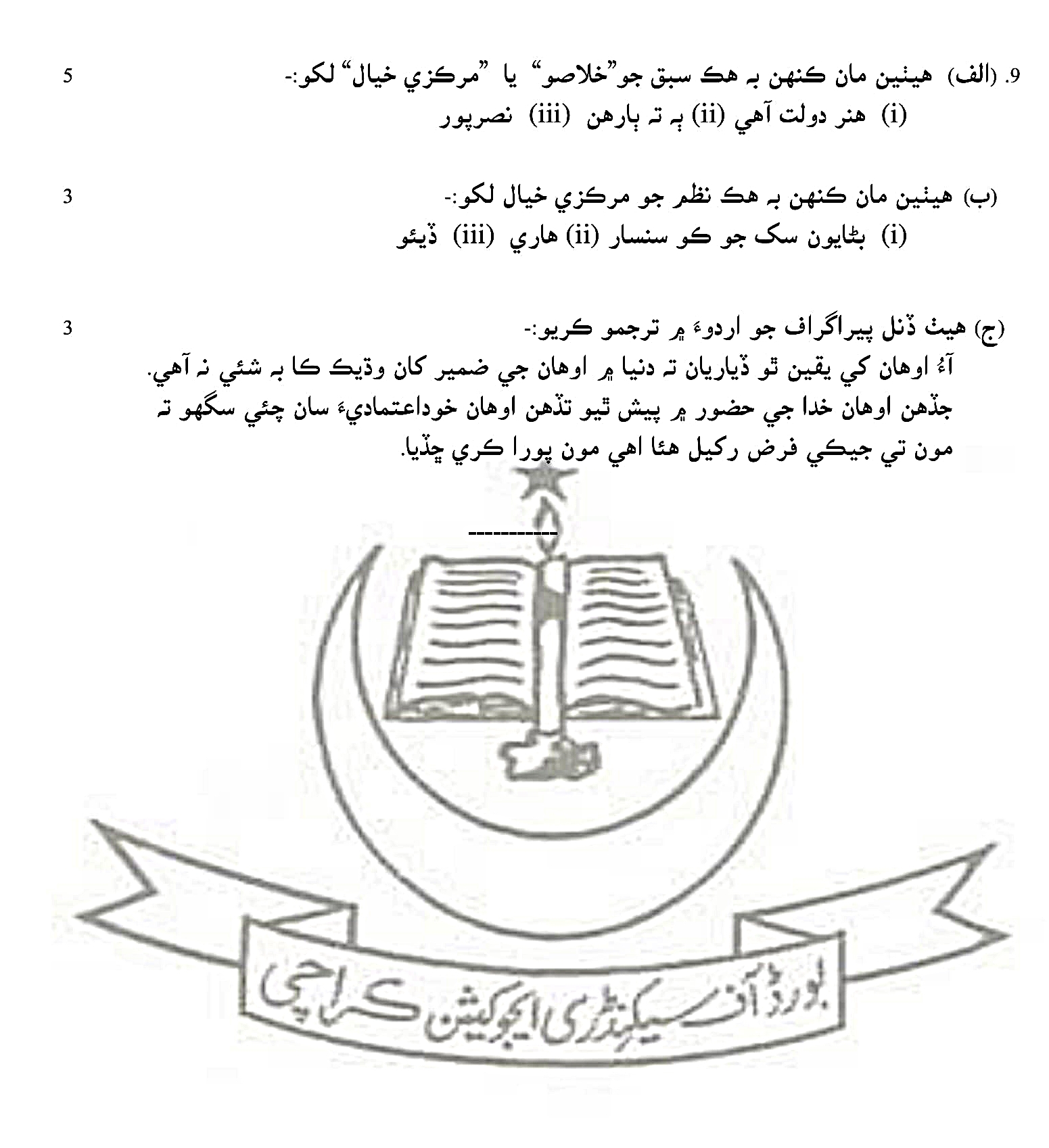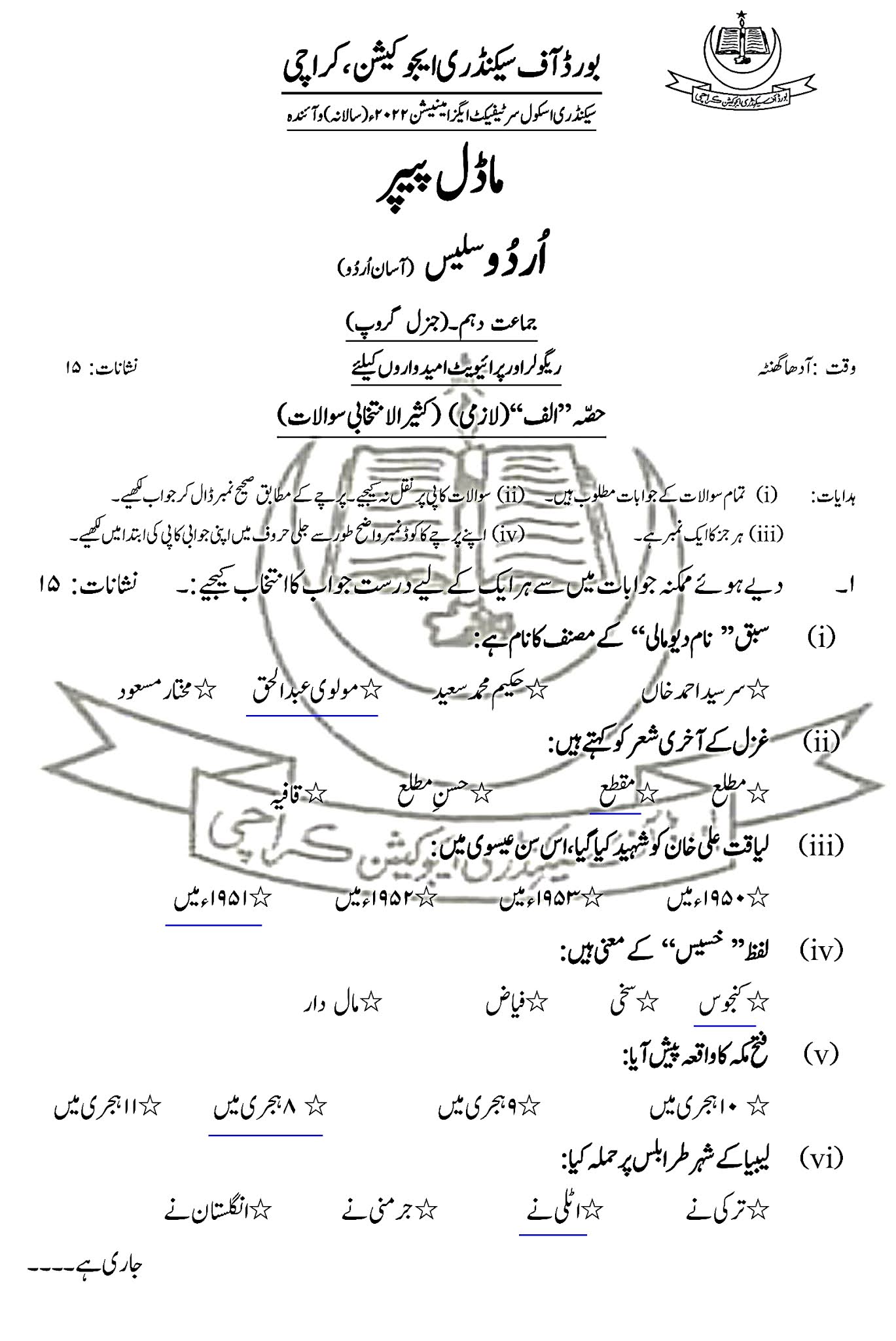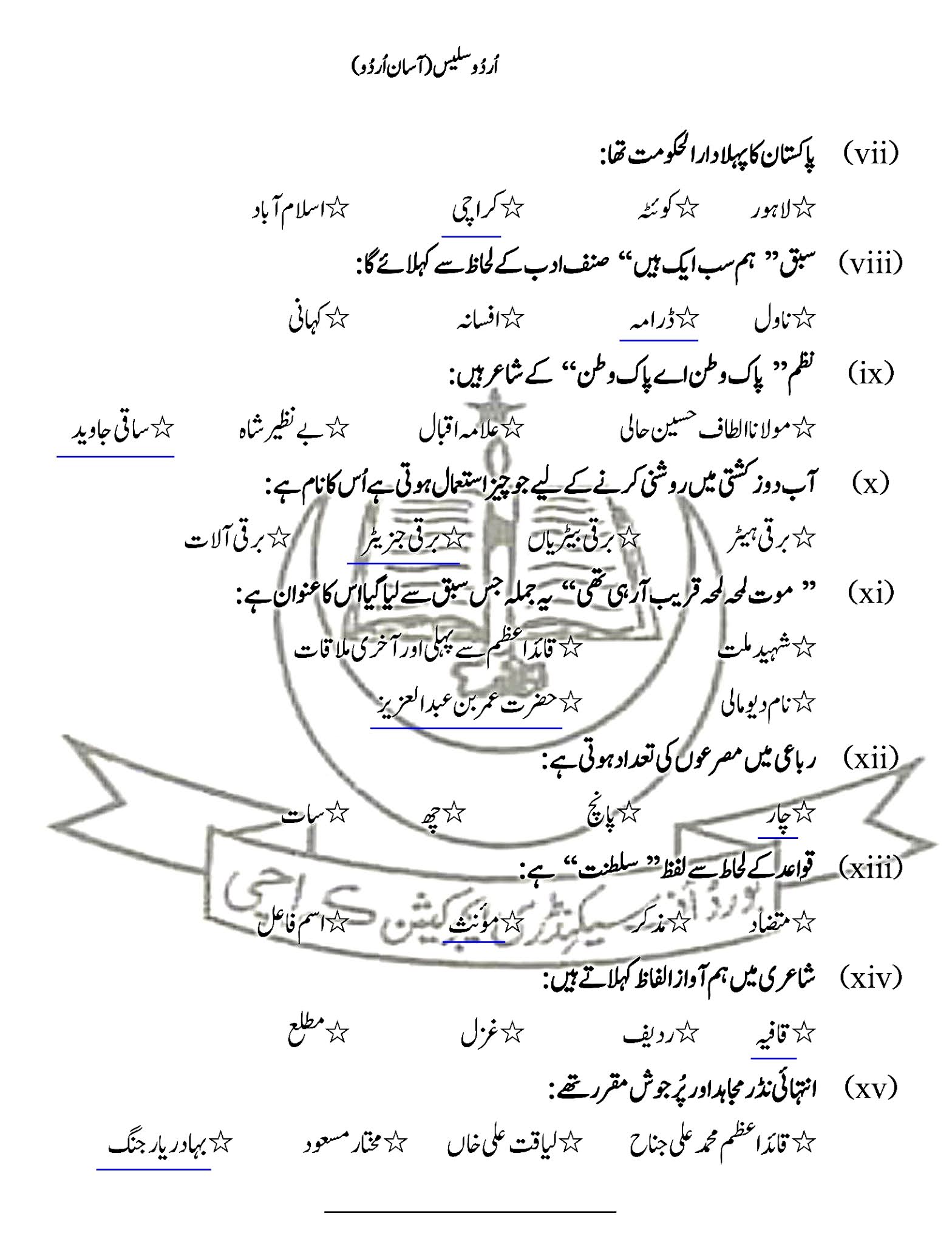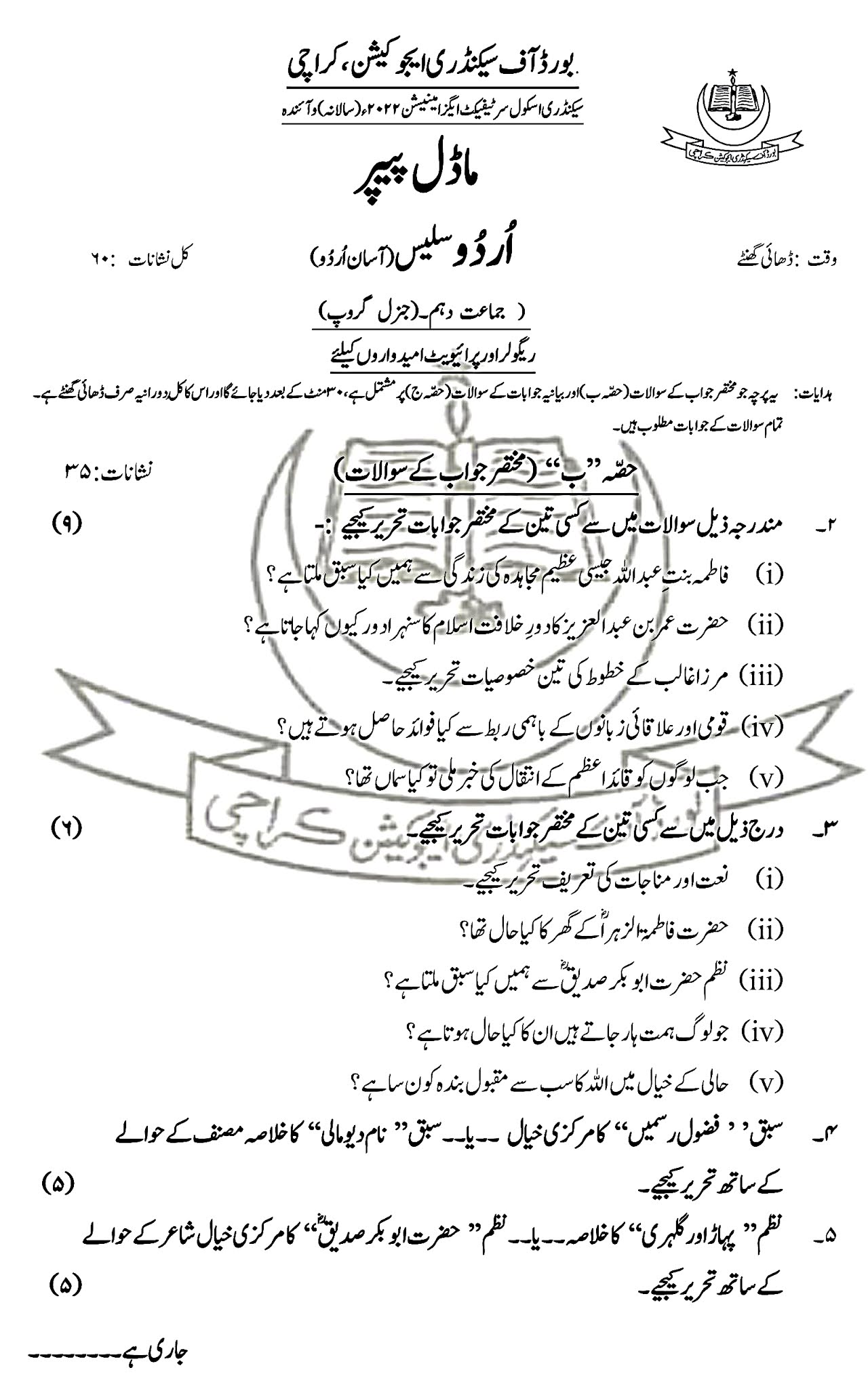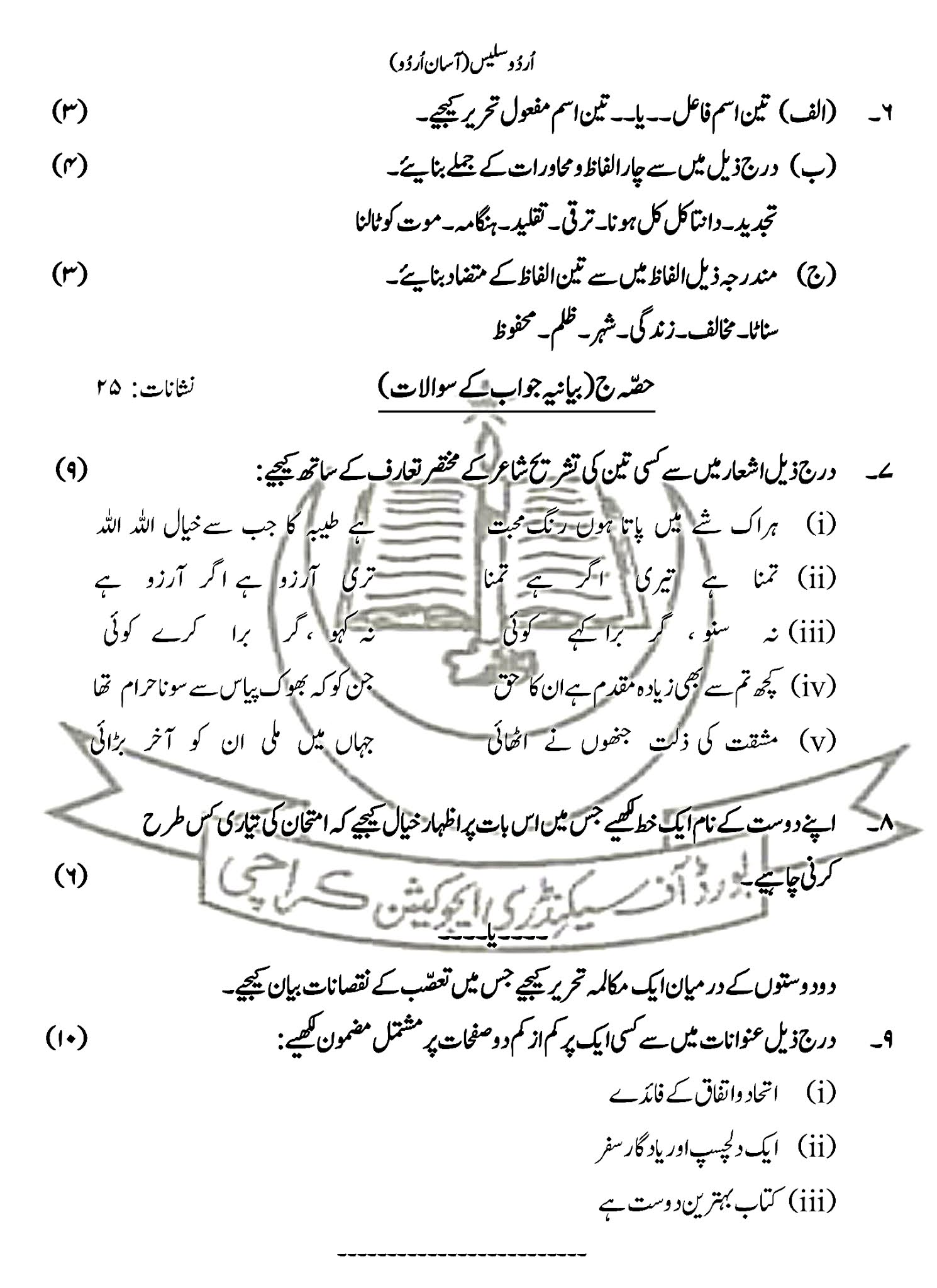Go To Index
Botany - Paper II
For Class XII (Science Group)
Solved Model papers 2020 -2021
Time: 01 hour Marks: 20
SECTION 'B' (SHORT-ANSWER QUESTIONS) (Marks: 12)
Q.2: Attempt any Four-part questions. Each question carries one mark. Give answer not more than two lines.(i) Name the pyrimidine bases in DNA structure.
Ans: Pyrimidine bases in DNA structure are:
- Cytosine
- Thymine
(ii) Define Apomixis and Parthenocarpy?
Ans: Definition Of Apomixis:
It is a modified form of asexual reproduction and naturally occurs in some plants. The production of embryo or seeds without meiosis and fertilization of flower is called Apomixis. Those plants which are produced by Apomixis are called "Apomicts".
Example: Asexual reproduction in Dandelions plant.
Definition Of Parthenocarpy:
In some plants fruits formation takes place without the process of fertilization and pollination, such fruits are always seedless and described as parthenocarpic fruit ( Parthenos = virgin, carpic = pertaining to fruit). This type of process is called as parthenocarpy.
Example: Banana, pine-apple, some grapes and orange varieties etc.
(iii) Define any one of the followings: (a) Autosome (b) Sex chromosomes
Ans: (a) Autosome:
The chromosomes which are similar in males and females are called autosomes.
(b) Sex chromosomes:
Those chromosomes which are involved in the determination of sex of the individual are called sex chromosomes.
(iv) Name the types of RNA involved in protein biosynthesis.
Ans: RNA involved in protein biosynthesis:
There are three major classes of RNA involved in protein biosynthesis, which are:
- Ribosomal RNA (rRNA)
- Transfer RNA (tRNA)
- Messenger RNA (mRNA)
(v) What happens when a cell is placed in a hypotonic solution?
Ans: If a plant cell is placed in hypotonic solution ( pure water or solution of higher water potential than the solution in its vacuole), the water moves from outside to inside the cell (endosmosis) and ultimately into the vacuole. As a result the cell swells or become turgid, Further allowing the cell into such hypotonic medium does not cause it to burst because the cell wall develop a tension causing an internal hydrostatic pressure or pressure potential due to which further uptake of water in cytoplasm is resisted and finally stop.
(vi) Write number of chromosomes in Pea (Pisum sativum) and Sugarcane (Saccharum officinarum)?
Ans: Number Of Chromosomes In:
- Pea (Pisum sativum): 14 Chromosomes or 7 Pairs
- Sugarcane (Saccharum officinarum): 80 Chromosomes or 40 Pairs
(vii) Define meristematic tissues and name its types.
Ans: Meristematic Tissues:
These tissues are composed of cells, which have the ability to divide. The cells are thin walled, have large nucleus and number of small vacuoles. Usually they do not have inter-cellular spaces, so the cells are arranged compactly. Two main types of meristematic tissues are recognized in plants.
- Apical meristems
- Lateral meristems
OR
(vii) How young stem gives mechanical support to plant body
Ans: Young stem has special type of anatomical arrangement, which also helps in supporting plant. The outermost layer of thin walled cells called epidermis. Region beneath epidermis are called cortex and the central portion called stele, which is mainly consist of vascular tissues and some soft tissues. This type of stem depends for its mechanical support on following tissues:
- Thin walled parenchyma - having turgidity.
- Thick walled living tissues like collenchyma and sclerenchyma.
- Stele as cylindrical core of vascular bundles.
Q3. Attempt any Four-part questions. Each question carries Two marks. Give answer not more than five lines.
(i) What is the phenotypic ratio if cross between color blind male and carrier female, with the help of checker board.
Ans: Cross between color blind male and carrier female:
(ii) Describe the changes occurs in Prophase of Mitosis.
Ans: Prophase Of Mitosis:
- This is the main and longest phase of nuclear division. The following main changes occur in nucleus and cytoplasm of a cell:
- During early prophase chromtin network breaks up to form long coiled, thick thread like structure called chromosomes.
- Each chromosome at this stage is already double, shorten and thicken in a pair of fine threads called chromatid.
- The nuclear membrane gradually disappears and spindle fibres are formed.
- At the same time centrosome divides to form two centrioles, each moves towards the opposite pole of the animal cell. The centrioles are absent in plant cells.
(iii) Describe any one of the followings:
Ans: Definitions:
(a) Pollination:
Pollination is a process in which pollen grains released from from anther (stamen) and carried by wind or animals land on the sticky stigma (carpel) though not necessarily on the same flower or plant.
(b) Double fertilization:
The union of two sperm cells with different cells of the embryo sac is termed as double fertilization. double fertilization ensure that the endosperm will develop only in ovules where the egg has been fertilized, thereby preventing angiosperms from squandering nutrients.
(iv) Name only the Biotic components of an ecosystem.
Ans: Biotic Components Of An Ecosystem Are:
- Producers
- Consumers
- Decomposers
(v) How is Photonasty different from Phototropism?
Ans: Difference between Photonasty and Phototropism
| Photonasty | Phototropism |
|---|---|
| It is non- directional movement caused by stimulus of light | (photo = light, tropos = turn). It is a irectional movement that takes place when plant is exposed to light coming only one directio. |
| The flower open or close due to light intensity. | It is positive if the movement is towards the source of light and if curvature (direction of) movement away from the source of light, it is negative phototropism |
| e.g: The flower ofoxalis and portulaca open in day and close at night. | e.g: stem grows towards source of light (positive phototropism) while roots grow away from source of light (negative phototropism) |
(vi) State the law of Segregation.
Ans: Law Of Segregation:
Mendels's law of segregation states that
"Each organism contains 2 factors for each traits and these factors segregate during the formation of gametes so that each gamete contains only one factor for each trait. When fertilization occurs, the new organism receives 2 factors for each traits, one from each parents."
(vii) Define Nastic movement.
Ans: Nastic Movement (Non-directional movement):
The term nastic movement is used for the movement which is unrelated to direction of stimuli and direction of stimulus is not fixed. This type of movement is mostly observed in leaves and petals etc. The types of nastic movement depend on the type of stimulus, they may be:
- Photonastic
- Thermonastic
- Seismonastic
- Nyctinastic
- Hyponastic
(viii) Discuss Abiotic components of desert ecosystem
Ans: Abiotic Components Of Desert Ecosystem:
- Dry climate
- Sunlight
- Hot sand
- The lack of moisture and water
- Hot temperature
SECTION 'C' (DETAILED-ANSWER QUESTIONS)
(Max-Marks: 08)
Note: Attempt any Two questions from this section. All questions carry equal marks. (Diagram is not required)Q.4: Explain the climatic factors of an ecosystem.
Ans: CLIMATIC FACTORS OF AN ECOSYSTEM:
It consists of::
- LIGHT
- TEMPERATURE
- WATER
- ATMOSPHERE AND WIND
- FIRE
1. LIGHT:
- Light is an important factor of life.
- The main source of light ss the sun.
- Light is essential for green plants for photosynthesis.
- Only 3% of total sunlight, which fulls on earth, is utilized.
- The intensity, duration and quality of light is important for living organisms.
i) LIGHT INTENSITY:
- Light intensity varies with seasons by light intensity.
- Opening and closing of stomata and permeability of cell membrane is affected by light intensity.
- Intense light destroys chlorophyll.
- The plants growing In light arc called helophytes while those growing in shade are called sclophytes.
ii) LIGHT DURATION:
- The light duration or photoperiod has marked-effect on flowering, leaf fall and dormancy in plants.
- In animals, behavioral activities (biological rhythms) such as court ship display, nesting and other behaviours are also effected by light.
- In spring, migration of certain groups of birds depend upon photoperiod.
iii) LIGHT QUANTITY:
- The visible light which ranges from 400-780 mn, consists of seven colours. The chlorophyll absorbs red and blue green colour for photosynthesis.
- Light with shorter wavelength carries more energy but destroys micro-organisms and also causes sunburn in human beings.
2. TEMPERATURE:
- A moderate temperature favours the growth and other activities of plants and animals.
- Life exists, from 0°C to 50°C.
- Different animals found at different places are due to variation in temperature.
- Temperature below freezing. point or high temperature kills the living organisms or damage them.
- Optimum temperature is required for enzymes efficiency.
3. WATER:
- Water is the most important factor of ecosystem and is an important need of all the living organisms.
- According to the availability of water, plants are grouped into XEROPHYTES, HYDROPHYTES and MESOPHYTES.
- Water is abundant in aquatic ecosystem while it becomes limited in terrestrial ecosystem.
- Water Is needed for all the physiological activities of plants and animals.
- It is one of the raw materials needed for photosynthesis.
- In terrestrial ecosystem, rainfall is the main source of water.
- Plants absorb it from soil, however its availability is related to many factor like edaphic factors of soil and kind of vegetation.
- In nature continuous cycling of water also takes place, it is culled hydrological cycle.
4. ATMOSPHERE AND WIND:
- Atmosphere is u store house of CO2, O2, N2 and vapours of water.
- O2 is used In respiration.
- CO2 in used in photosynthesis and N2 is a major component of protein.
- Wind current distributes these gases and brings atmospheric circulation of water vapours.
- Wind also favour pollination and dispersal of seeds.
- Wind with high velocity breaks the branches and plants.
- Wind also influences the migration of flying birds and restricts timberline.
- At high altitude the air pressure and percentage of oxygen is low that's why in these areas mammals cannot live.
5. FIRE:
- Fire is n physical factor, which brings a sudden change in ecosystem.
- A Fire may be caused by lightening, volcanic activities rind mutual friction between trees such as bamboos and mostly by man.
- A forest which is established and created in centuries is destroyed in few minutes by fire.
- Fire favour the competition among trees and set new species as climax.
- Fire recycles various nutrients and new growth is stimulated.
- Fire also favours the growth of some fungi. These fungi are called Pyrophilous Fungi.
- Pyrophilous fungi decompose unborn dead plants or animals.
- Men made fires are set to clear ground for agriculture or making mud but this is the destruction of ecosystem.
OR
Describe osmoregulation in flowering plants?
Osmoregulatlon in Plants:
Efficient functioning of the plant cells and the whole plant depends upon maintaining the water content at a steady state. According to the availability of water, the pIants are divided into four groups.
- Hydrophytes
- Mesophytes
- Xerophytes
- Halophytes
Hydrophytes:
Hydrophytes are those plants, which are found in fresh water habitat.
The plants may be partly or totally submerged in water. They do not have any difficulty in obtaining water, To remove excessive water, they have following adaptation's.
Adaptations to remove extra water:
- Their leaves are large so surface area is large for removal of excessive water by transpiration.
- They have large number of stomata at upper surface of leaves.
- Stem and leaves are without cuticle.
- The Stomata always remain open.
- Root is absent, if present root hairs are absent.
Mesophytes:
- These are those plants, which are found in moderate supply or water, majority of angiosperms are mesophytes. These are the land plants and can easily maintain their water balance.
- When there Is sufficient supply of water, the stomata are kept open but when there is restricted supply, the stomata are closed.
- To prevent excessive loss, the stems and leave are covered with cuticle.
- Shape of leaf is variable which also helps in regulating water. Leaf fall also help in regulating water.
Xerophytes:
- These are the plants which are found in dry places such as deserts, steep hills. Under such conditions, the water potential is very low. They have following adaptations to prevent the water loss.
- Root is deep vertical to absorb more water from soil and it also spread horizontally.
- Leave in most cases are absent or shed during dry season. In such cases stem becomes green and perform the function of photosynthesis.
- Leaves become small or modified into spines to reduced the rate of transpiration.
- The leaves are covered with cuticle (thick waxy layer) or by hair.
- Number of stomata are reduced and are sunken type.
- In rainy season stem, root and leaves store water in their parenchymatous cells such plants are called succulents.
- Leaves fold themselves to reduce the rate of transpiration.
- Germination of seed occurs during rainy season.
Halophytes:
- The plants growing in salt marshes close to sea are called halophytes. They have to absorb water, which has high salt concentration, i.e. with lower water potential.
- Such plant actively absorbs salt by their root and as the salt concentration in their root cell becomes high, they absorb water by osmosis.
- Excess of salt absorbed by root, stored in the cells is excreted out from salt glands in leaves.
- The salt thus secreted by some species help them to trap wow vapours from air, which is being absorbed in liquid form by leave surface.
Q.5: Define Meiosis. Explain the various stages of Prophase -I of meiosis.
Ans: MEIOSIS:
Meiosis is a cell division in which one cell divides into four cells and the number of the chromosomes is reduced to half. Meiosis occurs in diploid cells during gametogenesis. Meiosis consists of two successive divisions, Division I and Division II.
Division I is reduction division, during which the chromosomes number (2n) in both daughter cells is reduced to half (n).
Division II is simple mitotic in nature.
Each division passes through four phases, as:
1st Meiotic Division
- Prophase I
- Metaphase I
- Anaphase I
- Telophase I
2nd Meiotic Division
- Prophase II
- Metaphase II
- Anaphase II
- Telophase II
PROPHASE I:
Prophase of first meiotic division is longer in duration and complicated. It passes through five sub-stages.
- Leptotene
- Zygotene
- Pachytene
- Diplotene
- Diakinesis
Leptotene = (Slender):
- This is the first stage of meiosis.
- The chromatin material condenses to from thread like structures called chromosomes.
- Before meiosis starts, the chromosomes become duplicated which is DNA replication, but the two chromosomes are so close that they look like a thread.
- The identical pairs, Maternal and Paternal chromosomes remain unevenly distributed.
- The centrioles move to the opposite poles.
Zygotene = (Joining):
- The chromosomes shorten and thicken.
- The homologous (maternal and paternal) chromosomes attracts each other and start pairing, the process is called SYNAPSIS.
- The pairing is very exact and is point to point and gene to gene.
- The two synapped chromosomes are called BIVALENTS.
Pachytene = (Thick):
- After pairing, the chromosomes become thick and short.
- The homologous chromosomes twine around each other and each starts splitting into two sister chromatids by a longitudinal splitting except in the centromere region.
- Due to this splitting, the bivalent becomes tetravalent (with four chromatids).
Diplotene = (Double):
- The synaptic force of attraction between each bivalent consisting of four chromatids decrease.
- The homologous chromosomes start repelling each other but mostly uncoiled i.e. overlapping areas remain contact in one or more points.
- This point of contact is called chiasma (Plural: Chiasmata).
- The overlapping occurs at non-sister chromatids.
- At chiasmata the chromatids breaks. This breakage is accompanied by reunion in such a way that corresponding fragments are interchanged between the two non-homologous chromosomes, this physical change is called crossing over.
- Crossing over is significant in heredity.
Diakinesis = (Through movement):
- Diakinesis is characterized by the disappearing of the nuclear membrane, nucleolus and completion of spindle apparatus.
- The separation of bivalent is completed by the process called terminalization.
- The movement of the chiasmata from the centromere towards the ends of the chromosome arms take place like a zipper.
- At the end of stage, the two chromatids held together at their ends and the bivalent become more thickened, contracted and prominently visible.
Q. No.6: Define "Law of Independent assortment" and explain with checkerboard.
Ans: Statement Of Mendel's Second Principle (Law of Independent Assortment):
Gregor John Mendel's proposed the Law of Independent Assortment, which state that:
"The memberof one pair of genes segregate independently of the other pairs."
OR
"Members of one pair of factor segregate (assort) independently of members of another pair of factor. Therefore all possible combinations of factors can occur in gametes."
OR
"When a pair or contrasting characters are followed in one cross, their genes assort independently into gametes, gave of one pair inherit independently of the other pair, therefore all possible combinations of genes can occur in gametes."
Mendel's Procedure:
After working on several monobybrid crosses, Mendel took two traits for cross between two individuals. Such cross is called dihybrid cross, and the ratio obtained in F2 generation is called dihybrid ratio. The result achieved as a consequence of dihybrid-cross is spoken of as Inheritance of two traits.
Mendel experiments on garden peas. He took 4 units of characters such as;
- Yellow Flower (YY) with round seeds (RR)
- Green Flower (yy) with wrinkled seeds (rr).
F1 generation produced all flower yellow with round seed as both the traits were dominant.
But when seeds of F1 generation were collected and sown, the segregation of characters took all possible combinations and produced 4 kinds or offspring in F2 in the following ratio:-
9 Yellow round.
3 Yellow wrinkled.
3 Green round.
1 Green wrinkled.
i.e. 9 : 3 ; 3 : 1.
It has also been noticed that some of them were homozygous and some were heterozygous.Among the 4 kinds of offspring, two showed parental combination (Yellow round and green wrinkled) while two were new i.e. Green round and Yellow wrinkled. This means that trait of round seed was not tied with yellow colour and it was inherited independently. This exchange of genes (trait) takes place during crossing over which provides an opportunity for new varieties.
Result:- Thus we obtained a ratio 9 : 3 : 3 : 1
Q.No.7: Explain ultrastructure of Chromosomes.
Ans: Ultrastucture of Chromosomes:
The chromosome of a eukaryotic cell has 40%. DNA and 60% protein. A significant amount of RNA is also associated with chromosome because DNA is responsible for RNA formation. The DNA of a chromosomes is very, long double stranded fiber that stands, a duplex which extends unbroken through the entire length of chromosome.
A typical human chromosome has 140 million nucleotide in its DNA. The amount of information Coded in one chromosome fills about 280 books of 1000 pages. If a strand of a chromosome is laid in straight line, it would be 5 cm long.
Under electron microscope DNA of a eukaryotic cell show following Ultrastucture of Chromosomes:
Nucleosome:
The coiling of DNA is like string of beads. DNA duplex is coiled around a complex histone, which are small, very basic polypeptides, rich in the amino acids, arginine and lysine. Eight of these histone form the core of an assembly called a 'NUCLEOSOME'. Because so many of their amino acids are basic histones are very positively charged. The DNA duplex, which is negatively charged, is strongly attracted to histone and wraps tightly around the histone core of each nucleosome. The core thus acts as a magnetic forms that promotes and guides the coiling or DNA. Nucleoprotein (histone) gives DNA fiber as a beaded structure. The nucleosome is repeated after every 200 nucleotides of DNA.
Spacer DNA:
The DNA present from one nueleosome (bend) to an other is called Spacer DNA.
Super Coil:
Further coiling of DNA occurs when the string of nucleosome wraps into higher-order coils called Super Coil.
Chromatin:
The super coil network is called chromatin (Chromatin network) Chromatin is a loose network of threads which is seen in non living nucleus. Chromatin is again classified into Euchromatin and heterpchromatin on the basis of staining properties.
Heterochromatin:
Stains deeply because it is more coiled and compact it is inactive and never expressed itself.
Euchromatin:
Stains more during nuclear division and is involved in transcription (Protein Synthesis).
Q.No7: What do you mean by sex determination? Discuss linked inheritance with reference to colour blindness.
Ans: SEX CHROMOSOME:
The biologist tried to determine, whether an offspring will be male or female in an egg. The first information on sex came from Cytological studies by C.E. Mc Clung, E.B Wilson and N Steven between 1901-1905.
It was found that in plants and animals most of the chromosomes are pairs of homologous chromosomes, the members of one pair are not homologous, i.e. the two differ from each other morphologically in both male and female.
"This odd chromosome, which determines the sex of the individual is termed as "sex chromosomes".
The sex chromosomes are non-homologous and are mostly represented by 'X' and 'Y' chromosomes and they can not form pair.For example: In human being, the difference in males and females is not of one whole chromosome, but of the shape of one chromosome in one sex, which is unlike its mate and unlike any chromosome in the opposite sex. In man each sex cell has 46 chromosomes, of which 44 i.e. 22 pairs are similar in both sexes, these are called autosomes. The 23rd pair in female consists of two similar chromosomes, but in the male of the 23rd pair differ in shape, one of the two is like those of the female, but the second is much smaller, these are called sex chromosomes. The two chromosomes of the female and one of the male which are alike known as X chromosomes, while the unlike smaller one only in male is called Y chromosome. The human female possesses a genotype of 44 + XX chromosomes, whereas the genotype of male is 44 + XY chromosomes.
Linked Inheritance:
A form of inheritance in which the transmission of the genetic material is coreeelated with the sex of the parents is called sex linked inheritance.
OR
Any genetic trait which is transmitted through sex chromosome is called sex linked inheritance.Linked Inheritance With Reference To Colour Blindness:
It is a sex-linked inheritance found in human beings. Persons suffering from colour blindness have difficulty in distinguishing red from green. It is a rather common trait and more common in males. It is because Y chromosome is inherit for this trait. Only one gene of this trait will render a colour blind man. While on the other hand a woman must have two genes for this trait to become colour blind. This trait of colour blindness can easily be detected by using special charts made up of a number of coloured dots so arranged that colour blind persons see a different pattern than other persons do.
The possible results of various crosses are shown in the following charts.
Gene on chromosome
N = Normal eyed male
n = Colour blind female
(i) CROSS BETWEEN COLOUR BLIND MALE AND NORMAL FEMALE:
Result: When a colour blind male marries a normal female, all children will be normal but daughters will be colour blind carrier.
SOURCE: Board Of Intermediate Education Karachi
